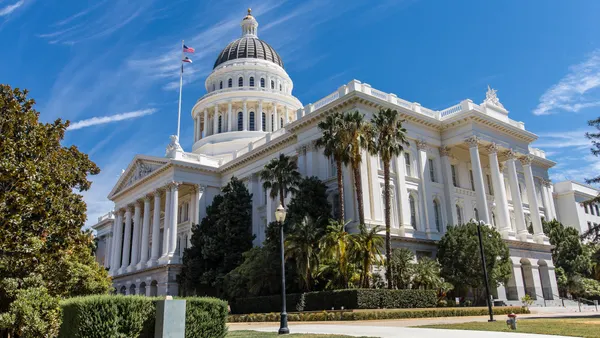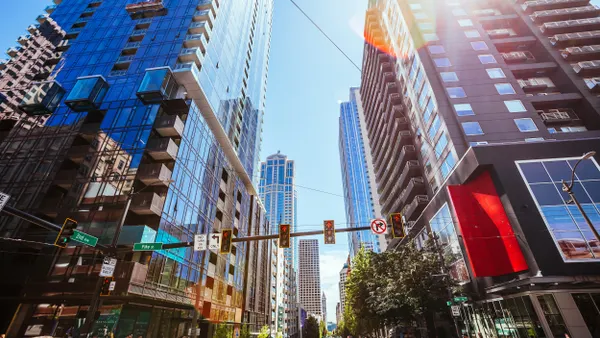Dive Brief:
- Los Angeles Mayor Eric Garcetti has unveiled L.A.'s Green New Deal. This four-year update to the city's original sustainability plan, released in 2015, expands and accelerates the city's climate action goals.
- The plan accelerates targets to ensure 55% of L.A.'s energy is renewable by 2025 and 100% by 2045; increase the percentage of zero-emissions vehicles in the city to 25% by 2025 and 100% by 2050; convert all city fleet vehicles to zero emissions by 2028; ensure all new buildings are emissions-free by 2030; and ensure 57% of new housing units are built within 1,500 feet of transit by 2025.
- The Green New Deal is touted as a guide for a cleaner environment, stronger economy and more resilient city. The plan also is designed to prioritize communities that bear the brunt of climate change.
Dive Insight:
The plan says Los Angeles met or exceeded 90% of the near-term goals from the original plan either on time or early. Now, the updated plan steps up actions in acknowledgement of climate change reaching "crisis" level.
"The scale of our ambitions must meet the magnitude of this crisis. So we are doubling down with L.A.’s Green New Deal and laying out more aggressive goals that will help transform Los Angeles into a carbon neutral city where all Angelenos thrive," Garcetti wrote in the document.
The sustainability plan lays out the benefits to citizens that a cleaner environment will provide. In part, the city considers climate action a public health issue, noting that it aims to prevent premature deaths and hospital visits from environmental-related ailments such as respiratory and cardiovascular illnesses.
Some of the elements of L.A.'s Green New Deal mirror well-known climate action in other cities. For example, its goal to cut buildings' energy use and carbon emissions is similar to San Francisco's announcement last week that it would transition all buildings over 50,000 square feet to 100% renewable energy by 2030. Earlier this month, Chicago became the largest U.S. city to commit to 100% renewable energy by 2035.
One of the elements that makes L.A.'s sustainability plan stand out from other cities' is the emphasis it puts on equity. Researchers increasingly have warned city leaders that low-income neighborhoods bear a disproportionate share of environmental burden, an idea reiterated in a report from Yale last year. Low-income areas often have less access to transportation, less green space and more carbon-producing infrastructure such as major road thoroughfares and industrial areas.
Implementing upgrades to improve environmentally friendliness — such as converting residences to renewable energy or purchasing an electric vehicle — is often cost prohibitive for low-income residents. Prioritizing communities that bear the brunt of climate change puts L.A. on a path to equity with its climate action goals.










